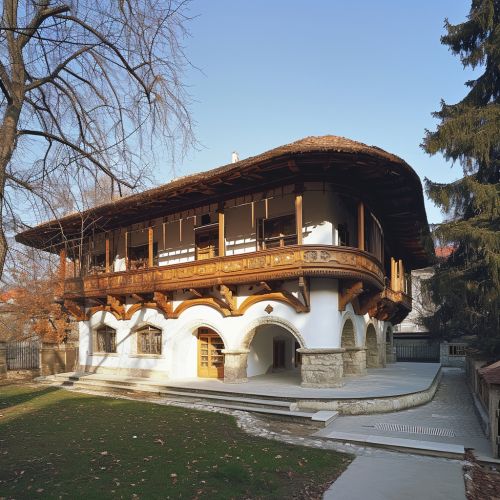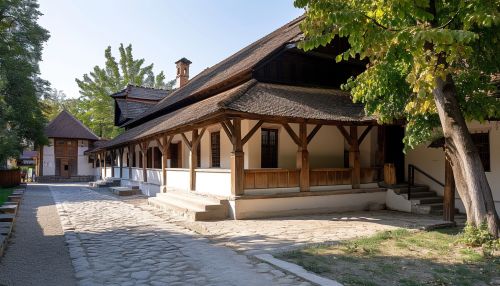Museum of the Romanian Peasant
History
The Museum of the Romanian Peasant (Romanian: Muzeul Țăranului Român) is a key institution in Bucharest, Romania, dedicated to the preservation and promotion of traditional Romanian folk culture. The museum was established in 1906 by Alexandru Tzigara-Samurcaș, a Romanian ethnographer and folklorist, with the aim of creating a comprehensive collection of artifacts and documents related to peasant life in RomaniaAlexandru Tzigara-Samurcaș.


The museum was initially housed in the Royal Palace, but it was moved to its current location in 1953. The building that houses the museum is a significant example of Neo-Romanian architecture, a style that emerged in the late 19th and early 20th centuries that combines traditional Romanian architectural elements with Art Nouveau influencesNeo-Romanian architecture.
Collections
The Museum of the Romanian Peasant holds one of the most extensive collections of Romanian folk art and artifacts in the country. The museum's collections are divided into several sections, each focusing on a different aspect of traditional Romanian peasant life.
Folk Art
The folk art collection includes a wide range of objects, from textiles and ceramics to wooden sculptures and icons. The textile collection features traditional Romanian costumes, rugs, and tapestries, many of which are decorated with intricate patterns and motifs that reflect the rich cultural heritage of the Romanian peopleRomanian folk costumes.
The ceramics collection includes pottery from various regions of Romania, showcasing the diversity of styles and techniques used by Romanian potters. The wooden sculptures and icons collection features religious and secular works, many of which were created by self-taught peasant artists.
Ethnography
The ethnography section of the museum focuses on the everyday life of the Romanian peasant. It includes a variety of objects, such as tools, household items, and agricultural implements, that provide insight into the traditional ways of life in rural RomaniaEthnography.
Architecture
The architecture section of the museum features a collection of traditional Romanian houses and other structures, including barns, mills, and churches. These buildings have been carefully dismantled and reconstructed on the museum grounds, providing visitors with a unique opportunity to explore the traditional architectural styles of rural RomaniaRomanian architecture.
Exhibitions and Activities
The Museum of the Romanian Peasant regularly hosts temporary exhibitions, workshops, and other cultural events. These activities aim to promote the understanding and appreciation of Romanian folk culture, both among the local population and among visitors from abroad.
The museum's temporary exhibitions often focus on specific aspects of Romanian folk culture, such as traditional crafts, music, or customs. The museum also hosts workshops where visitors can learn traditional crafts, such as pottery or weaving.
In addition to its exhibitions and workshops, the Museum of the Romanian Peasant organizes a variety of cultural events throughout the year. These include folk music concerts, traditional dance performances, and festivals celebrating Romanian customs and traditions.
